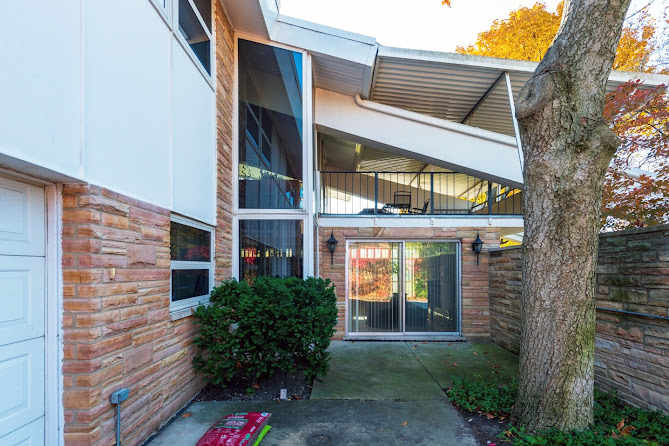Until 1833, Chicago was just a settlement with only the Cook County organization for a government. In 1833 with a population of approximately 300, it was incorporated as a town. It became a place of considerable importance and attracted a great body of immigrants who came West that year, producing many improvements.
The Indian lands were to be sold, and Chicago started out with a boom. The inns were crowded, and travelers considered themselves fortunate if they could secure a place on the floor to sleep.
During the summer of 1833, 160 houses were built, and the number of stores increased from five or six to twenty-five. The Green Tree Tavern was the first structure built as a public house among the new buildings. While the old Kinzie house and several other houses had been open to travelers, there had never been a building put up for that purpose until the Green Tree in 1833.
Read a first-hand account of a traveler's overnight stay at the Green Tree Tavern.
Read a first-hand account of a traveler's overnight stay at the Green Tree Tavern.
sidebar
Chicago's First Three Taverns:Wolf Point Tavern opened in December of 1828. The Wolf Point Tavern was rechristened by its owner, Chester Ingersoll, The Travelers' Home, in October 1833.Eagle Exchange Tavern - Mark Beaubien opened the Eagle Exchange Tavern in a log cabin on the south bank in 1829. In 1831 Beaubien added a frame addition and opened Chicago's first hotel, the Sauganash Hotel.The Green Tree Tavern was built in 1833 - The Green Tree Tavern was later renamed the City Hotel, then the Lake Street House, and finally the Tenement House.
The United States Government began to pay some attention to the growing town on Lake Michigan's shore, and the harbor was improved at the expense of $325,000 ($12M today).
The channel of the river was straightened, widened, and deepened. The sand bar at the mouth of the river turned the river down (south) the shore from Water Street to Madison before emptying into the lake was cut through, and vessels could enter and pass up to the forks. The mail arrived semi-weekly and departed for Galena, Springfield, Alton, and St Louis.
On October 26, 1836, the Town Board took the necessary steps to secure a charter for the city of Chicago. A public meeting was held on November 25, and E. B. Williams, as President, appointed J. D. Caton, Ebenezer Peck, T. W. Smith, W. B. Ogden and Nathan Boiles delegates to draw up a charter for presentation. This charter was presented to the board on December 9, and the Legislature passed the bill approving the charter on March 4, 1837.
THE FIRST CITY LIMITS.
The first meeting was held on August 12, and Colonel Owen was chosen as President. The boundaries of the village were: Commencing at the intersection of Jackson and Jefferson streets, thence north on Jefferson to Ohio Street, thence east on Ohio Street to the lake, thence south along the lake to the middle of the river, thence up to State street, thence South along State to Jackson street, thence west to the place of beginning, comprising about seven-eighths of a mile square. The Jog made from the mouth of the river to State Street was because of the military reservation there. This was the incorporated village of Chicago.
But during this time, the village of Chicago was fast growing in population, importance and fame. By 1837, the population was over 4,000 people, and the citizens thought it was time to keep pace with the dramatic growth and have the city chartered.
In 1833 the population had been 200, and in 1836 it had increased to 8,820. The harbor was in the process of improvement, the Illinois and Michigan Canal had begun, land speculators were buying up the land, and there was plenty of capital in Chicago.
On October 26, 1836, the Town Board took the necessary steps to secure a charter for the city of Chicago. A public meeting was held on November 25, and E. B. Williams, as President, appointed J. D. Caton, Ebenezer Peck, T. W. Smith, W. B. Ogden and Nathan Boiles delegates to draw up a charter for presentation. This charter was presented to the board on December 9, and the Legislature passed the bill approving the charter on March 4, 1837.
sidebar
The indigenous tribes of the Chicago area were the Potawatomi, Ojibwe, and Odawa Nations, as well as the Miami, Winnebago (Ho-Chunk), Menominee, Sauk (Sac), Meskwaki (Fox), Kickapoo tribes, and the Illinois.The first plat of the Chicago settlement was filed in 1830.Cook County was created on January 15, 1831 by an act of the Illinois State Legislature as the 54th county established in Illinois. The unincorporated Fort Dearborn settlement at the mouth of the Chicago River became the new county's seat. On May 7, 1831, Cook County elected its first officials.Chicago was incorporated as a town on August 12, 1833, with a population of about 350. With a population of 4,170, the town of Chicago filed new Incorporation documents on March 4, 1837, to become the City of Chicago and for several decades was the world's fastest-growing city.
Compiled by Dr. Neil Gale, Ph.D.














